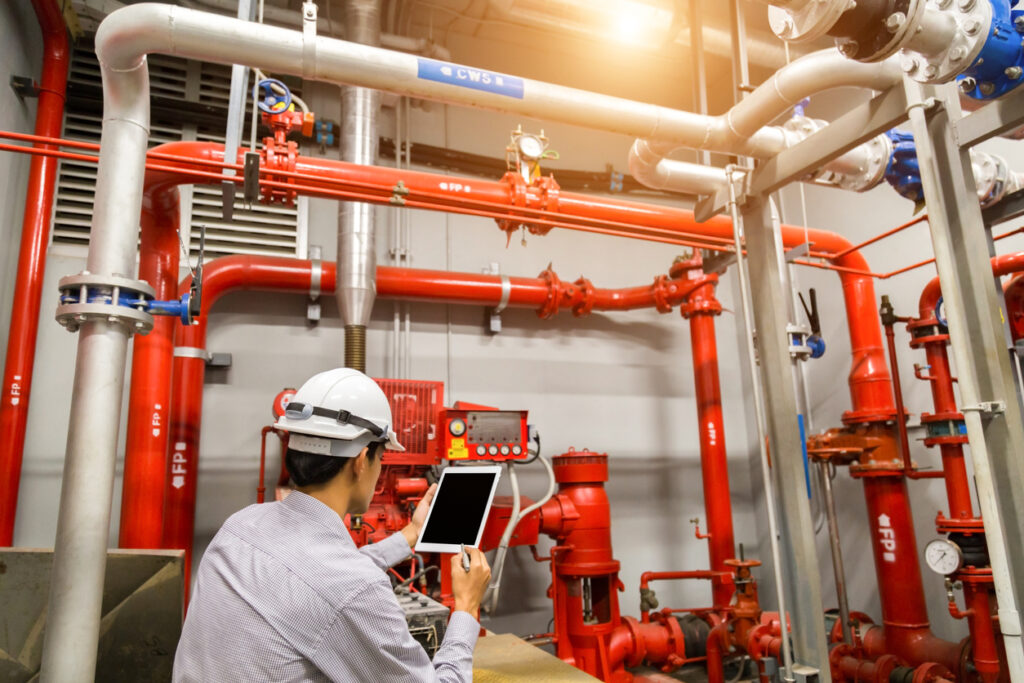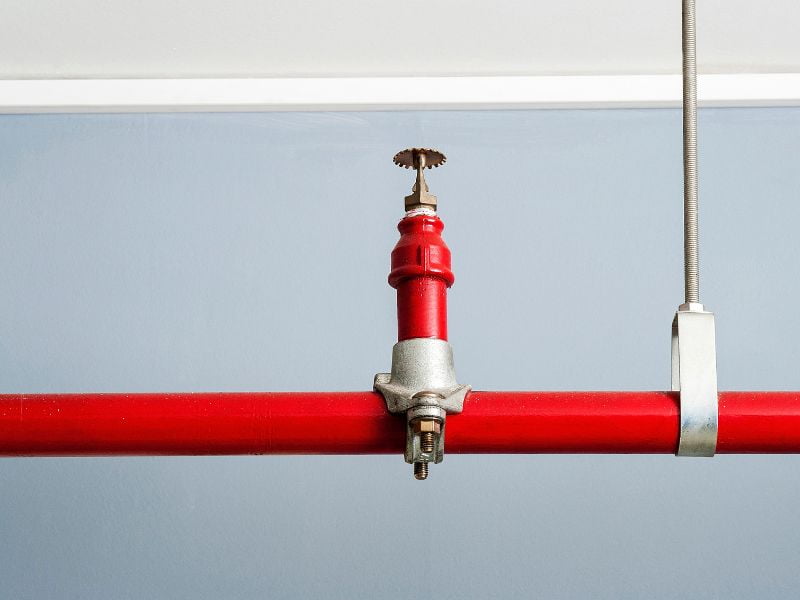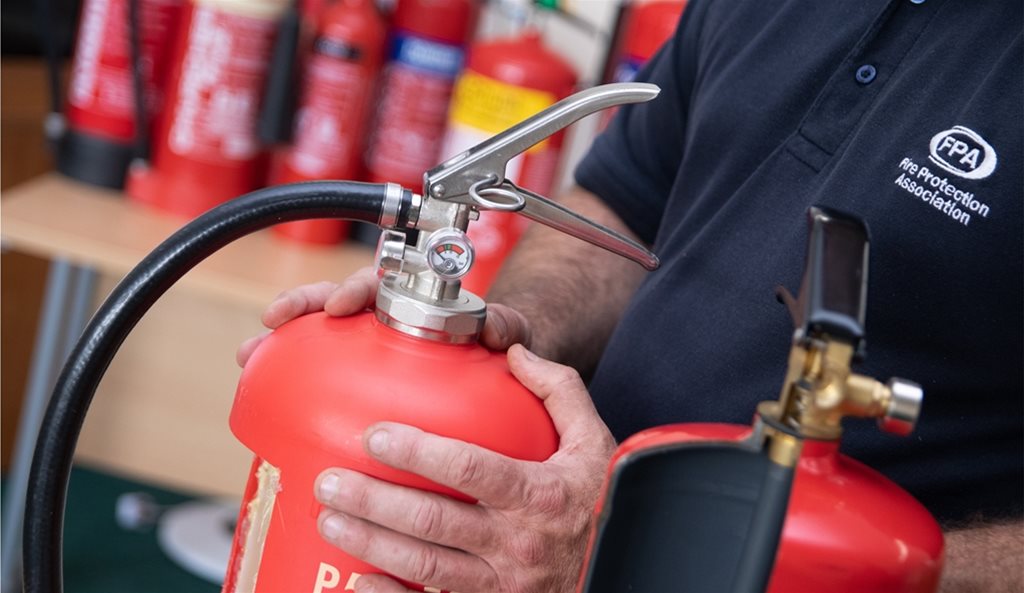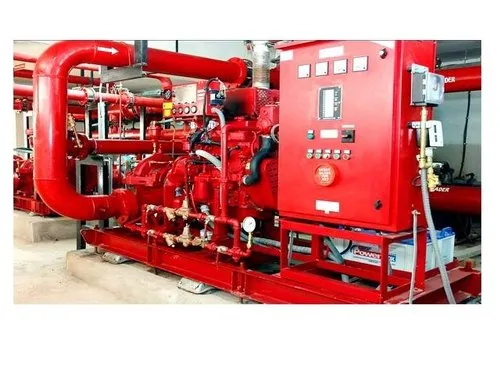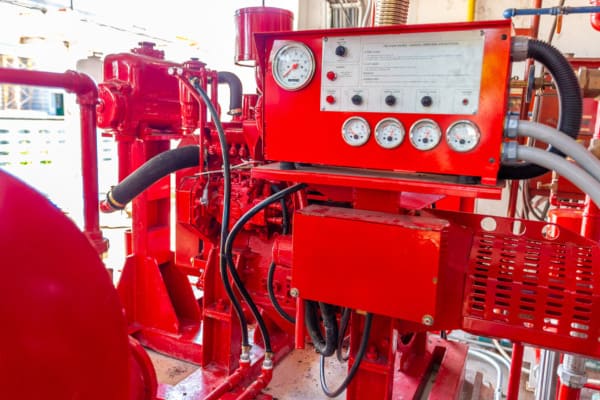Fire Protection: Fire safety is a critical concern for industrial buildings due to the unique hazards they present. These facilities often house heavy machinery, flammable materials, and large volumes of products, making them susceptible to fires.
Implementing effective fire protection strategies is not just a regulatory requirement; it’s essential for safeguarding human life, property, and business continuity.
In this comprehensive guide, we’ll explore essential fire protection tips for industrial buildings.
Understanding Fire Risks in Industrial Settings
Before delving into specific fire protection strategies, it’s crucial to understand the unique risks associated with industrial buildings. Common fire hazards include:
- Flammable Materials: Many industrial operations involve the use of chemicals, fuels, and other flammable substances that can easily ignite.
- Electrical Equipment: Machinery and electrical systems can malfunction, leading to sparks and fires.
- Heat Sources: Processes that generate heat, such as welding or cutting, can pose significant fire risks.
- Poor Housekeeping: Accumulation of dust, debris, and flammable materials can increase the likelihood of a fire.
- Human Error: Negligence or lack of training among employees can contribute to fire incidents.
1. Conduct Regular Fire Risk Assessments
Regular fire risk assessments are vital for identifying potential fire hazards in an industrial building. These assessments should include:
- Evaluation of Fire Hazards: Identify all potential fire hazards, including flammable materials and heat-producing equipment.
- Employee Interviews: Talk to employees about their daily operations and any fire hazards they encounter.
- Review of Safety Protocols: Examine existing fire safety protocols to determine their effectiveness.
Action Steps:
- Schedule fire risk assessments at least once a year.
- Involve employees in the assessment process to gain insights into potential hazards.
2. Implement a Fire Safety Plan
A comprehensive fire safety plan outlines procedures for preventing and responding to fires. This plan should include:
- Evacuation Routes: Clearly marked and unobstructed evacuation routes are essential for ensuring safe exits during a fire.
- Fire Alarm Systems: Install reliable fire alarm systems that can detect smoke and heat.
- Emergency Contacts: Include contact information for local fire departments and emergency services.
Action Steps:
- Develop a fire safety plan that complies with local regulations.
- Regularly review and update the plan to reflect any changes in the facility or operations.
3. Install Fire Suppression Systems
Fire suppression systems are critical for controlling and extinguishing fires in industrial buildings. Common types include:
- Sprinkler Systems: Automatic sprinkler systems can quickly douse flames and minimize damage.
- Foam Systems: Ideal for flammable liquids, foam systems create a barrier between the fuel and the fire.
- Gaseous Fire Suppression Systems: These systems are suitable for areas housing sensitive equipment, as they extinguish fires without damaging electronics.
Action Steps:
- Consult with fire protection professionals to determine the best suppression systems for your facility.
- Conduct regular maintenance checks to ensure these systems are operational.
4. Maintain Electrical Safety
Electrical malfunctions are a leading cause of industrial fires. To mitigate this risk, consider the following:
- Regular Inspections: Schedule routine inspections of electrical systems and equipment.
- Proper Wiring: Ensure that all wiring is installed correctly and meets safety standards.
- Circuit Breakers: Use circuit breakers to prevent overloads and short circuits.
Action Steps:
- Hire qualified electricians for inspections and repairs.
- Train employees to recognize signs of electrical problems, such as flickering lights or burning smells.
5. Provide Employee Training
Employee training is crucial for fire safety in industrial buildings. Training should cover:
- Fire Safety Protocols: Teach employees about evacuation routes, assembly points, and emergency contacts.
- Use of Fire Extinguishers: Train staff on the proper use of fire extinguishers and other fire-fighting equipment.
- Fire Drill Exercises: Conduct regular fire drills to familiarize employees with emergency procedures.
Action Steps:
- Schedule fire safety training sessions at least twice a year.
- Keep records of all training sessions and employee participation.
6. Implement Good Housekeeping Practices
Maintaining a clean and organized workspace can significantly reduce fire risks. Key housekeeping practices include:
- Regular Cleaning: Remove dust, debris, and flammable materials from work areas.
- Proper Storage: Store flammable materials in designated areas with appropriate containment measures.
- Waste Disposal: Dispose of waste materials promptly and safely.
Action Steps:
- Assign housekeeping responsibilities to specific employees or teams.
- Conduct regular audits to ensure compliance with housekeeping protocols.
7. Use Fire-Resistant Materials
Incorporating fire-resistant materials into the construction and maintenance of industrial buildings can enhance fire safety. Consider:
- Fire-Resistant Walls and Ceilings: Use materials that can withstand high temperatures and prevent the spread of flames.
- Fire-Resistant Coatings: Apply fire-resistant coatings to structural elements and equipment.
- Fire Doors: Install fire-rated doors to compartmentalize areas and contain fires.
Action Steps:
- Consult with construction professionals regarding fire-resistant materials during renovations or new constructions.
- Regularly inspect fire-resistant features to ensure they remain effective.
8. Establish a Fire Watch Program
A fire watch program involves assigning trained personnel to monitor for fire hazards, especially during hot work operations like welding or cutting. Key components include:
- Designated Fire Watchers: Assign responsible individuals to monitor work areas for signs of fire.
- Fire Watch Procedures: Develop procedures for reporting and responding to potential fire hazards.
Action Steps:
- Train fire watchers to recognize and respond to fire risks.
- Maintain communication between fire watchers and other employees.
9. Ensure Accessibility to Fire Equipment
All fire-fighting equipment, such as extinguishers, hoses, and alarms, should be easily accessible. Consider these tips:
- Clear Signage: Use clear signage to indicate the location of fire-fighting equipment.
- Regular Inspections: Conduct regular checks to ensure that equipment is in good working order.
- Unobstructed Access: Keep pathways to fire equipment clear of obstructions.
Action Steps:
- Create a map of emergency equipment locations and distribute it to all employees.
- Schedule routine inspections of fire-fighting equipment.
10. Collaborate with Local Fire Departments
Building a relationship with local fire departments can enhance fire safety in industrial buildings. Benefits include:
- Pre-Incident Planning: Local fire departments can provide valuable insights into effective fire response strategies.
- Fire Safety Inspections: Fire officials can conduct inspections and offer recommendations for improvements.
- Training Opportunities: Collaborate with fire departments to provide training sessions for employees.
Action Steps:
- Invite local fire officials to conduct a walkthrough of your facility.
- Schedule regular meetings to discuss fire safety initiatives and improvements.
Conclusion
Fire protection in industrial buildings is an ongoing responsibility that requires diligence and commitment. By conducting regular assessments, implementing comprehensive safety plans, and investing in training and equipment, businesses can significantly reduce the risk of fire and ensure the safety of their employees and assets. Remember, fire safety is not just about compliance; it’s about creating a culture of safety that prioritizes the well-being of everyone in the workplace.
By following these fire protection tips, industrial facilities can be better prepared to prevent fires and respond effectively in the event of an emergency. Prioritizing fire safety is an investment in the future of your business, ensuring that operations can continue smoothly and safely.

